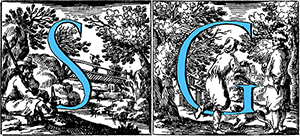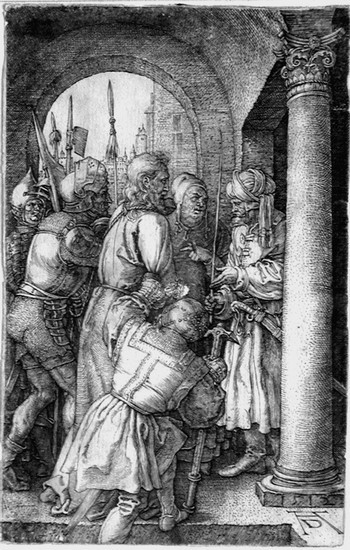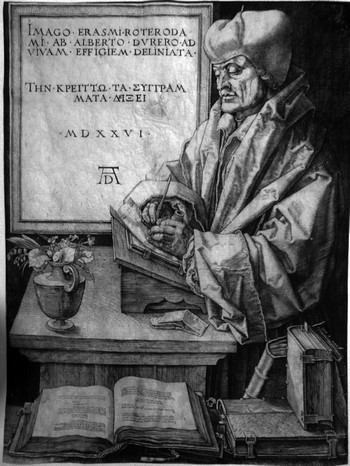
DÜRER Albrecht
(Nuremberg 1471 – 1528)
Dürer was a German painter, engraver and mathematician born in a Hungarian family. His father, also named Albrecht, Germanishly called himself Thürer shortly after arriving in Nuremberg.
His father was a goldsmith at the service of Hieronymus Helfer and eventually married his daughter Barbara. Together they had eighteen children: Albrecht was the second and, like his brother Hans, he undertook an artistic career. Still as a boy, he began the apprenticeship at his father’s by learning about the secrets of goldsmith’s art and the use of the burin for metal engraving. At fifteen years, he was sent to the atelier of the most important painter and engraver of the town, Michael Wohlgemut, who was the author of fine works in late Gothic style. Here Dürer managed to perfect not only the art of painting, but also that of intaglio on wood (woodcut) and copper (engraving). We know very few works of that period, although some of the woodblock in the Chronicle of Nuremberg, made in the Wohlgemut workshop, can be attributed to the young Dürer.
In 1492 he went to Colmar with the aim of completing his apprenticeship at Martin Schongauer, the greatest painter and engraver of the time, but when he arrived the master was already dead. However, he was warmly welcomed by the Schongauer family both in Colmar and in Basel where he could continue to practice metal engraving and carving on wood.
In 1494, after his marriage with Agnes Frey, he made his first trip to Italy where we know for sure that he stayed in Venice and admired the works of Mantegna, Pollaiolo and Jacopo de Barbari.
Returning to Nuremberg, he applied himself to the woodcut producing wonderful masterpieces up to the first decade of the 16th century: the series of the Apocalypse, most tables of the La Grande Passione series, many tables of the Life of the Virgin, the various compositions of the Holy Family and the Saints. The years 1507 to 1511 are also the ‘pictorial’ years in which his most important paintings were produced.
From 1511 to 1514 Dürer devoted himself to the metal engraving, preferring that on copper matrix. Among the works of this period there are the Engraved Passion; Melancholy; Knight, Death and Devil and St. Jerome in his study.
Furthermore, the engraving techniques entered the artist’s life and did not abandon him anymore: Dürer considered the engraving as a form of art and developed and cared for different and innovative themes that led him to be perhaps the best antique print engraver, along with Rembrandt. During his extensive pictorial production, Dürer has developed the art of portrait and self-portrait, in which he demonstrated the ability of a remarkable psychological investigation. His pictorial masterpieces are preserved today in the most important museums all over the world. Even through the circulation of his prints, his fame had spread throughout Europe and many great artists were in good relationship with him, if not even in friendship, just like Raphael, honored to exchange drawings with Dürer.
Durer’s pupils were not just those in his workshop, but all those painters in Europe who copied his personal ability to blend the influence of the Nordic Renaissance with the suggestions of Italian art. Sick for a long time, he died on April 6, 1528 in his home in Nuremberg and was buried in the cemetery of St. John’s Church.















